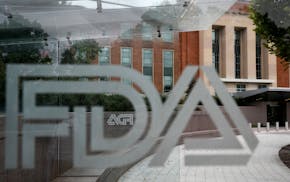Investors appear to be getting wise to the buyback illusion, looking not just at shares being extinguished but at the greater number being created.
By any measure, the buyback binge pursued by U.S. companies has been huge, with S&P 500 companies buying back $553.5 billion in the year to June, up 3.8 percent from the year before. Overall, almost $700 billion was bought back in 2014 by U.S.-held companies, according to Research Affiliates data.
Yet while the combination of buybacks and dividends is often referred to as "total shareholder return," that's actually a misnomer, just as it would be if you called your purchase of an asset with borrowed money an increase in wealth.
Research Affiliates did a detailed study comparing the amount of stock U.S. companies issued during the same period they were also rebuying shares. This task is not made easy by companies and requires not just a close read of cashflows but also comparisons derived from stock price movements and market capitalization data.
The result: Those companies that bought back almost $700 billion in 2014 issued $1.2 trillion worth of stock and took on just about $700 billion of debt while doing so.
"When management redeems stock options, new shares are issued to them, diluting other shareholders. A buyback is then announced that roughly matches the size of the option redemption. This facilitates management's resale of the new stock they were issued in the option redemption. Buyback? Not really! Management compensation? Yes," write Chris Brightman, Vitali Kalesnik and Mark Clements of Research Affiliates.
There is evidence that investors are waking up to these facts.
Drug firm Johnson & Johnson announced a $10 billion buyback plan on Tuesday, just before it released earnings that beat street expectations. To be sure, J&J also said a strong dollar was hampering earnings, but the reaction has been underwhelming, with its stock now trading more than 1 percent below where it was before the news.
Wal-Mart on Wednesday tried to sweeten a bitter pill, breaking news not just that it expects profits to fall 6 to 12 percent in its next fiscal year but also that it would pursue $20 billion of buybacks over two years. Not only did its stock fall 9.5 percent but Sterne Agee & Leach analyst Charles Grom told clients the buyback implies contracting margins and slow sales growth.
James Saft is a Reuters columnist.

Remnants of bird flu virus found in pasteurized milk, FDA says
Timberwolves dispute between Taylor and Lore, Rodriguez over ownership moves to mediation
Tesla 1Q profit falls 55%, but stock jumps as company moves to speed production of cheaper vehicles
Montana minor league baseball team in dispute with National Park Service over arrowhead logo
